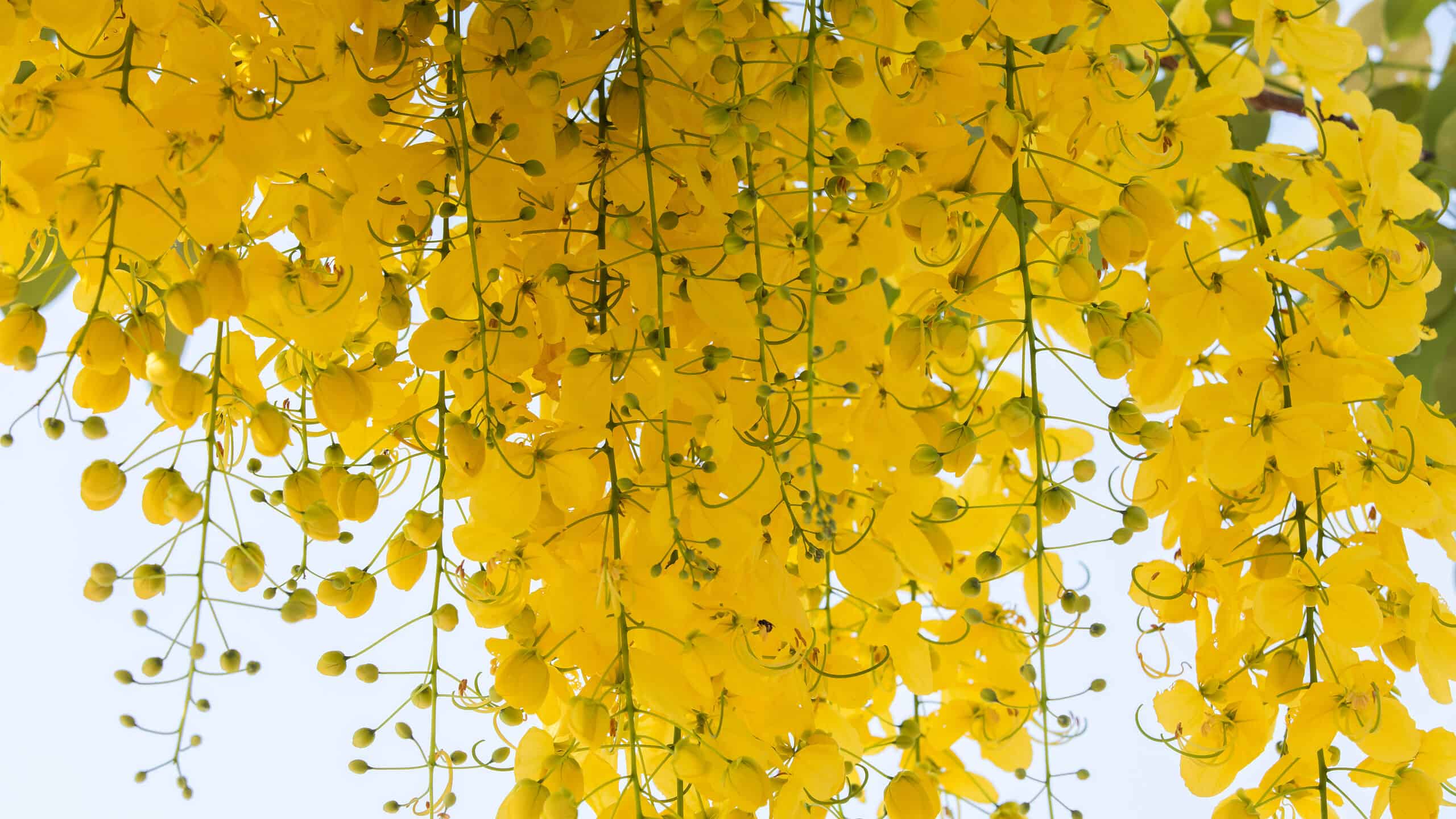Geography of Thailand
Thailand is a Southeast Asian country located in the heart of the Indochinese peninsula. The geography of Thailand is varied and includes mountain ranges, plateaus, tropical rainforests, fertile plains, and islands. Most of its landscape consists of lowland plains along with several mountains ranging from 1600 to 3,200 feet high.
Forests cover approximately 38% of the total land area and are home to some rare species like tigers, elephants, and gibbons. There are also numerous rivers, including the Chao Phraya River, which flows through Bangkok, the Mekong River, which forms much of the eastern border with Laos and the Salween River, which forms part of the western border with Burma.
In addition to its varied terrain, Thailand has thousands of miles worth of coastline on both sides facing both the South China Sea and the Gulf Of Thailand, where there are many beautiful beaches.
Native Plants
In Thailand, numerous native plants grow wild. Some common examples include Siamese rosewood, Ironwood, and Red sandalwood. Additionally, Thailand is home to many species of orchids, such as the fragrant Phalaenopsis amabilis and Vanda tricolor. There are also varieties of rare medicinal herbs found in Thailand, such as Chinese foxglove and Jatropha curcas.
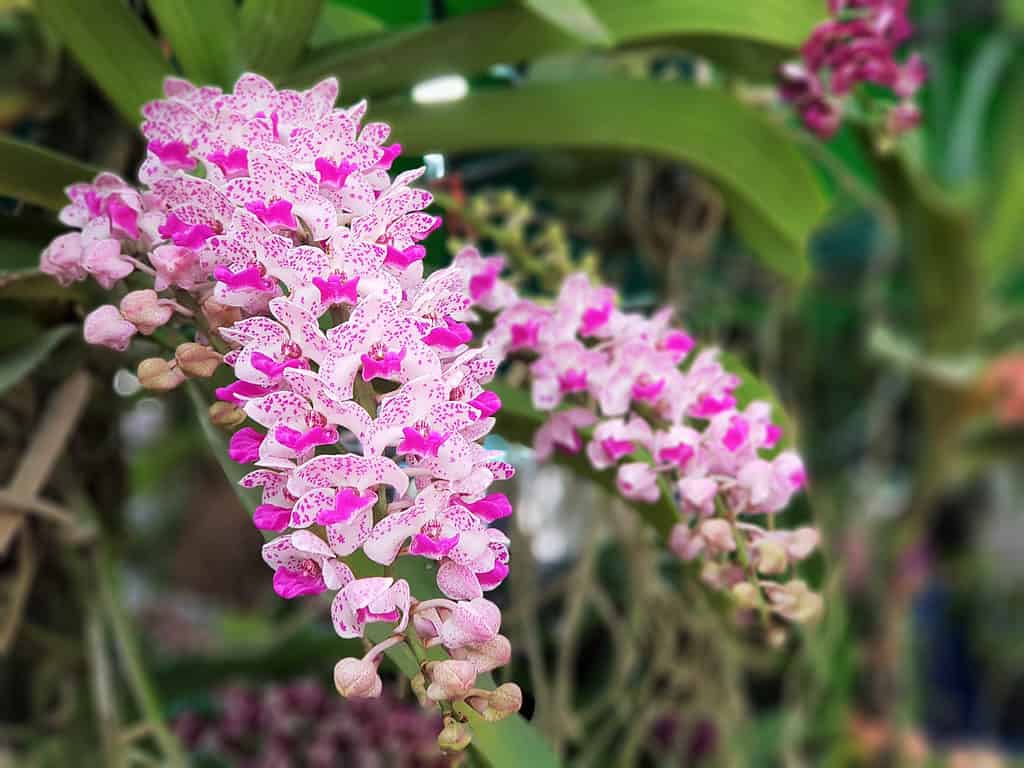
The foxtail orchid is one of many beautiful flowers native to Thailand.
©Arunee Rodloy/Shutterstock.com
National Flower
In October 2001, Cassia Fistula Linn was identified as Thailand’s national flower. Before this, there was no official symbol for the country. At the same time, an elephant was chosen as the national animal, and the Thai pavilion was designated as the national architectural feature.
Cassia fistula Linn is the botanical name of the tree which bears Thailand’s national flower. Other terms used to refer to this tree are ratchaphruek, chaiyaphruek, and dok Koon. It is also referred to as “the golden shower” and “rain tree” because of its bright yellow flowers that appear to fall from the branches like falling rain.

Cassia Fistula Linn is also called the golden shower or rain tree.
©TigerStocks/Shutterstock.com
Symbolism
In addition to its bold yellow color, the ratchaphruek is also a symbol of prosperity. Its large clusters of bright yellow blossoms are thought to bring good fortune and success. Its flowers are often seen as a sign of happiness and hope for the future.
Beyond this interpretation, they’re also associated with longevity, strength, and victory. Every year in May, when these trees bloom, people come out in droves to enjoy their beauty and celebrate the national flower during festivals throughout Thailand. Though it only blooms for about three months each year, it creates a stunning effect that can be seen from miles away, making it an unmistakable emblem of Thailand’s rich culture and history.

Cassia Fistula Linn is thought to bring good fortune and success.
©sumroeng chinnapan/Shutterstock.com
What is a Cassia Fistula Linn?
Cassia fistula is a gorgeous flowering plant in the pea family. It is native to tropical Asia and parts of Africa and is widely cultivated for its flowers throughout the tropics. The golden shower tree can be found growing in gardens and parks around the world.
It is a medium-sized tree that grows quickly up to 33–66 ft tall with a spread of about 15–20 ft wide. Its branches tend to droop downward, creating an umbrella-like canopy shape. When fully grown, this is ideal for providing shade during hot summer days. The leaves turn yellow before they fall off in the autumn months.
The flowers bloom in clusters at the tips of branches, creating a beautiful display for three months in summer and adding beauty to any garden or park setting!
The fruit produced by the golden shower tree is legume-shaped pods 12–24 inches. The pods have an unpleasant odor when ripe. They contain several seeds that disperse from one area to another via animals or birds who eat them.
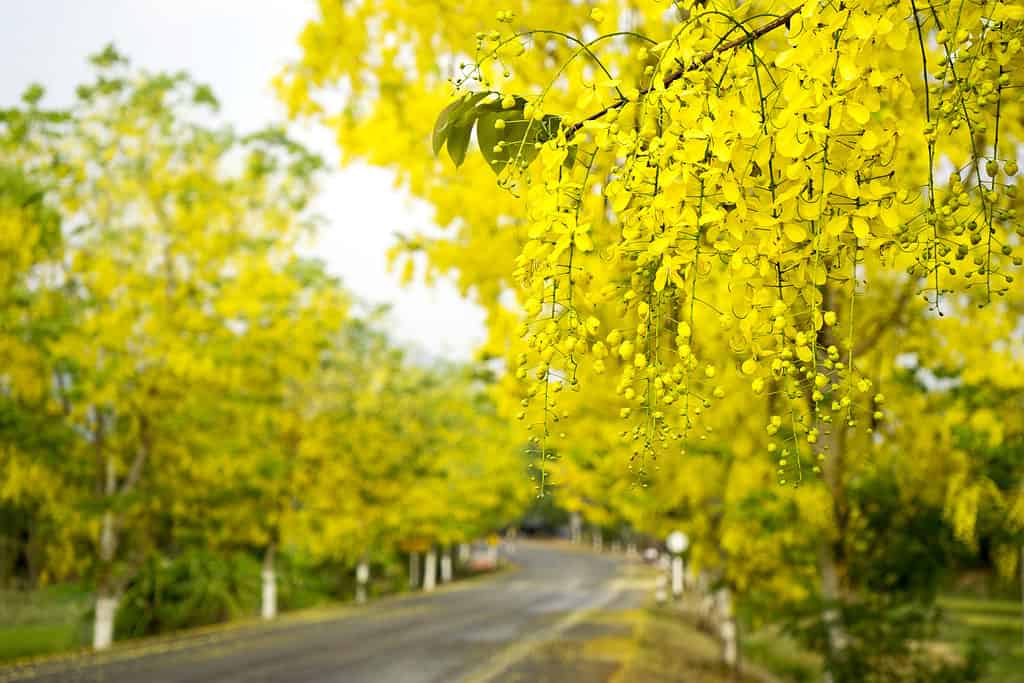
Cassia fistula, Thailand’s native plant makes a dramatic roadside display.
©sabthai/Shutterstock.com
Common Names
The golden shower tree has many names. It is known as the Indian laburnum or the golden pipe tree. It is native to Thailand and is called ratchaphruek, chaiyaphruek, and dok Koon there. It goes by many other common names, including purging cassia, purging fistula, and pudding-pipe tree. The botanical name for this beautiful flowering plant is Cassia fistula Linn.
How To Grow
Cassia fistula is a relatively easy plant to grow in tropical and subtropical climates when planted in direct sunlight and in well-drained soil. It is drought-tolerant once it has established deep roots. The blooming season is in late spring/early summer. The tree becomes covered in yellow flowers so thick that you can hardly see the leaves. It is slightly frost tolerant, but prolonged exposure to freezing temperatures will kill it.
Other Uses
In India, flowers of the Cassia Fistula Linn are sometimes eaten by people in salads or as garnish. The leaves of this plant have also been used to supplement the diets of goats, sheep, and cattle fed with low-quality forages. For example, it can be mixed into hay and grasses fed to livestock in order to increase the nutritional value. Additionally, Cassia Fistula Linn has been used as an herbal remedy for centuries due to its medicinal properties. Some people believe drinking tea from its flowers can treat fever and reduce inflammation, while extracts from the bark may help relieve congestion and coughs.
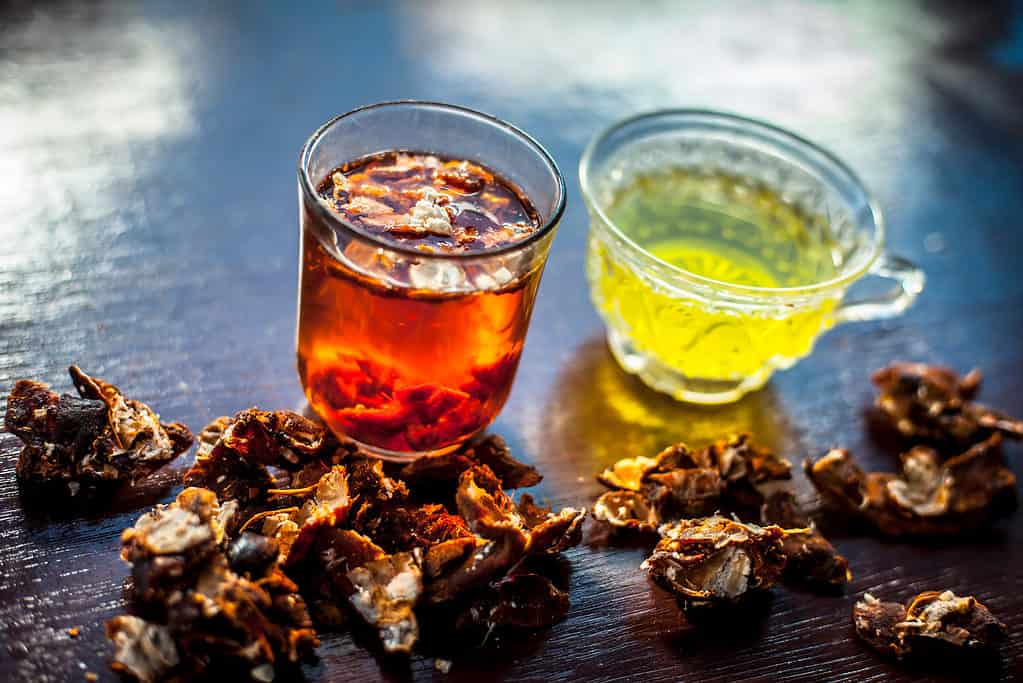
Golden shower tree fruit pulp is used with water and green tea for medicinal purposes.
©mirzamlk/Shutterstock.com
Origins
The Cassia Fistula Linn tree is native to the Indian subcontinent. Records of its presence date back centuries in India and Pakistan. The tree has since spread throughout Asia, with large populations appearing in Sri Lanka and Myanmar as well. In Thailand, it can be found growing wild across much of the country’s landscape from north to south. It is also frequently planted in gardens due to its showy yellow flowers that bloom during late spring and early summer.
Do Animals Eat It?
The bright yellow flowers of Cassia Fistula Linn attract many species of bees and butterflies. Carpenter bees are especially fond of this flower and can often be seen buzzing around it. In addition to pollinators, golden jackals also enjoy C. fistula fruits as a food source. These animals help disperse the seeds throughout their environment when they consume them. Thus these animals play an important role in keeping the population of this plant healthy by helping with both pollination and seed dispersal.
What Other Flowers Grow in Thailand?
In addition to the national flower of Thailand, Cassia Fistula Linn, other native flowers commonly found in Thailand include the white and yellow Dendrobium Orchid, which is known for its delicate yet powerful fragrance. You can also see the fragrant Plumeria or Frangipani, with its bright pink and white petals, and the colorful Bougainvillea plant. Other wildflowers that grow here include varieties of Hibiscus, Ixora, and Heliconia. All these flowers are beloved by locals who use them as decorations in their homes or gardens. They also form part of many traditional ceremonies such as weddings or birthdays.
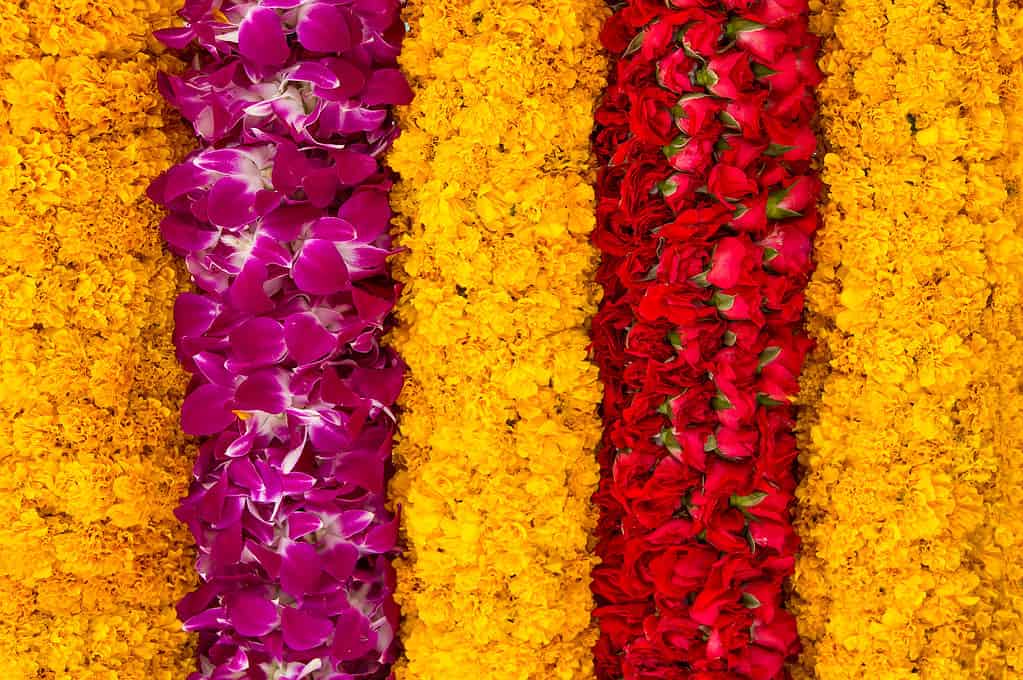
Thai-style garlands of Thailand’s native flowers.
©Segmed87/Shutterstock.com
NEXT UP
Thank you for reading! Have some feedback for us? Contact the AZ Animals editorial team.

